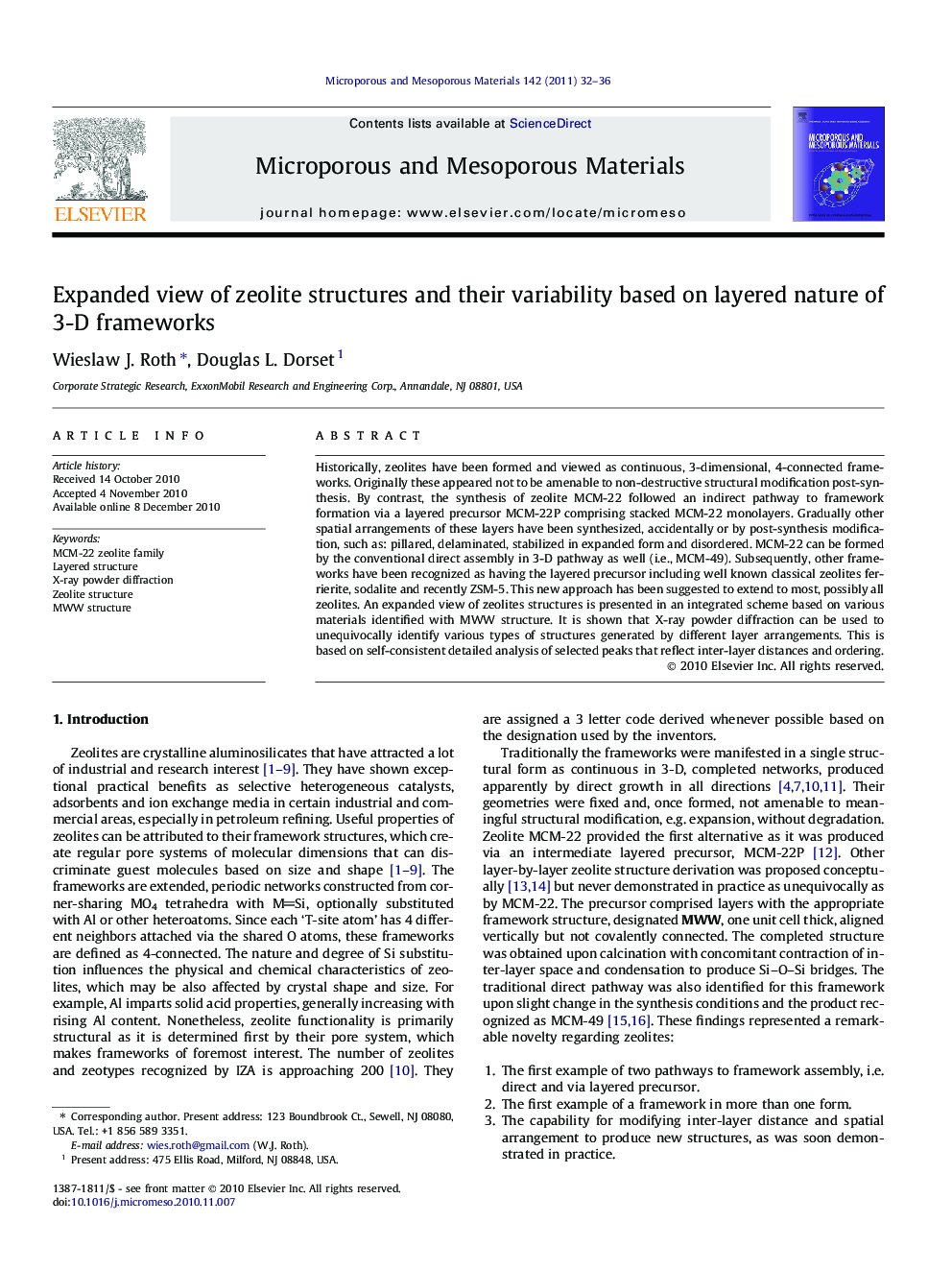| کد مقاله | کد نشریه | سال انتشار | مقاله انگلیسی | نسخه تمام متن |
|---|---|---|---|---|
| 74616 | 49096 | 2011 | 5 صفحه PDF | دانلود رایگان |

Historically, zeolites have been formed and viewed as continuous, 3-dimensional, 4-connected frameworks. Originally these appeared not to be amenable to non-destructive structural modification post-synthesis. By contrast, the synthesis of zeolite MCM-22 followed an indirect pathway to framework formation via a layered precursor MCM-22P comprising stacked MCM-22 monolayers. Gradually other spatial arrangements of these layers have been synthesized, accidentally or by post-synthesis modification, such as: pillared, delaminated, stabilized in expanded form and disordered. MCM-22 can be formed by the conventional direct assembly in 3-D pathway as well (i.e., MCM-49). Subsequently, other frameworks have been recognized as having the layered precursor including well known classical zeolites ferrierite, sodalite and recently ZSM-5. This new approach has been suggested to extend to most, possibly all zeolites. An expanded view of zeolites structures is presented in an integrated scheme based on various materials identified with MWW structure. It is shown that X-ray powder diffraction can be used to unequivocally identify various types of structures generated by different layer arrangements. This is based on self-consistent detailed analysis of selected peaks that reflect inter-layer distances and ordering.
Layered nature of the MCM-22 framework results in different arrangements of the MWW monolayers, which provides a model for other zeolites. The conventional 3-D framework may be viewed as representing a special case of layers stacked in-register and fused congruently.Figure optionsDownload as PowerPoint slideResearch highlights
► The traditional view of zeolites as 3-D structures is expanded by incorporation of various layered forms.
► Detected by X-ray diffraction patterns, the parent MWW layer structure has produced 6 different distinguishable architectures.
► More frameworks are anticipated to be constructed from layered precursors. Resultant alternative modes of layer packing produce new types of porous zeolites.
Journal: Microporous and Mesoporous Materials - Volume 142, Issue 1, June 2011, Pages 32–36